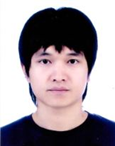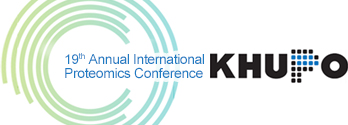Symposia Speakers
Home
> Program > Symposia Speakers > Symposia Speakers
- SYM-1Protein Modification SYM-1 View
- SYM-2Proteins in Pathology SYM-2 View
- SYM-3Biomarkers for Diseases SYM-3 View
- SYM-4Omics Research in Aging SYM-4 View
- SYM-5Clinical Proteomics SYM-5 View
- SYM-6Young Scientists SYM-6 View
- SYM-7Exploring the Unknown Proteins SYM-7 View
- SYM-8Antibody & Biologics SYM-8 View
- SYM-9Multi-omics SYM-9 View
- SYM-10Proteogenomics SYM-10 View
SYM-6 : Young Scientists

- Code / Date
- SYM6-1 / March 29 (Fri)
- Speaker
- Hee-Sung Ahn CV
- Affiliation
- Asan Medical Center
- Title
- Proteomics approach to discover the unrinary protein biomarkers to predict kidney function decline in type 2 diabetes
- Abstract
-

- Code / Date
- SYM6-2 / March 29 (Fri)
- Speaker
- Sohyun Kim CV
- Affiliation
- Seoul National University
- Title
- Raft-localized CD147 with proximal proteins confers drug-resistance phenotype in cancer stemness
- Abstract
-

- Code / Date
- SYM6-3 / March 29 (Fri)
- Speaker
- Shinyeong Ju CV
- Affiliation
- Korea Institute of Science and Technology
- Title
- iNrich, a rapid and robust method to enrich N-terminal proteome in a highly multiplexable platform
- Abstract
-

- Code / Date
- SYM6-4 / March 29 (Fri)
- Speaker
- Hyoung-Min Park CV
- Affiliation
- Seoul National University
- Title
- Novel protein markers for both human and canine breast tumors in plasma
- Abstract
-

- Code / Date
- SYM6-5 / March 29 (Fri)
- Speaker
- Kwang Hoe Kim CV
- Affiliation
- Korea Basic Science Institute
- Title
- N-Glycoprotein Biomarkers for Detection of Hepatocellular Carcinoma by Parallel Reaction Monitoring
- Abstract
-

Room 404, Nakseongdae R&D Center, 38 Nakseongdae-ro, Gwanak-gu, Seoul, 08790, Korea
Phone: (+82)2–393–8328 E-mail : admin@khupo.org Homepage : http://www.khupo.org
COPYRIGHT ⓒ 2019 KHUPO. ALL RIGHTS RESERVED.
